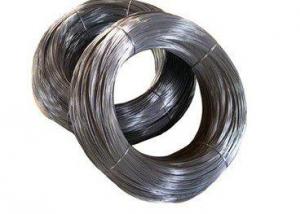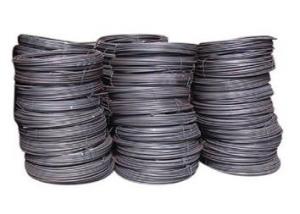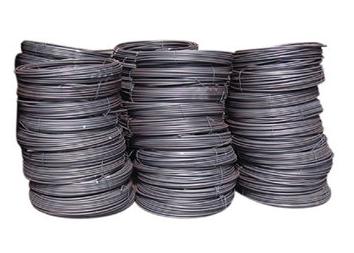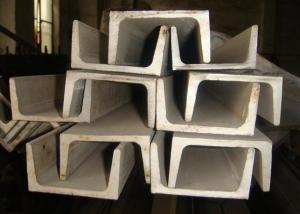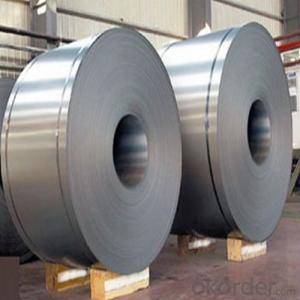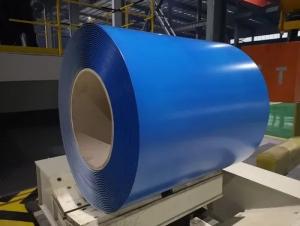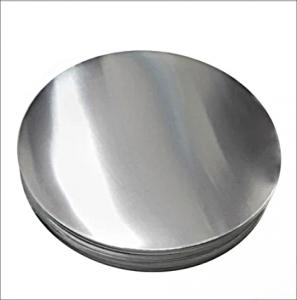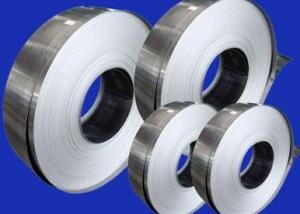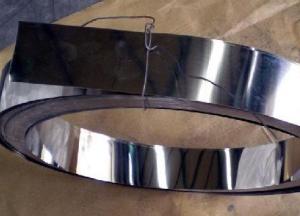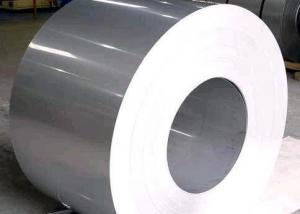AISI304 Stainless Steel Wire Mesh Roll
- Loading Port:
- China Main Port
- Payment Terms:
- TT or LC
- Min Order Qty:
- 1 Ton m.t.
- Supply Capability:
- 2000 Tons Per Month m.t./month
OKorder Service Pledge
OKorder Financial Service
You Might Also Like
304 Stainless Steel Wire
1.Grade: SS 200,300,400 series
2.Dia: 0.1mm-100mm
3.Length:500m-2000m/Reel
4.Surface: Bright
5.Certificate: Fortune 500, SGS, ISO 9001:2008
6.Test: Salt Spray over200 hours
7.MOQ:500kg
8.Delivery: Within 20 days
9.Packing: Reel, wooden box or according to your requirement
10.Payment terms: China Main Port or CIF ANY PORT
11. Application: Tie wire, pins, lashing, forming wire, filters, gaskets, elevators, safety wire, shaped and flat wire, conveyors, jewelry, springs, brush welding, electrical, wire line, craft and many more applications.
|
Main Grades |
C % |
Si % |
S % |
P % |
Mn % |
Cr % |
Ni % |
Mo % |
Cu % |
|
S30400 |
<0.08 |
<0.75 |
<0.015 |
<0.045 |
<2 |
18.05-19 |
8.01--8.25 |
<0.6 | |
|
304H |
0.04-0.1 |
<0.75 |
<0.015 |
<0.045 |
<2 |
18.05-19 |
8.01--8.25 |
<0.5 | |
|
304Hc1 |
0.03-0.05 |
<0.75 |
<0.015 |
<0.045 |
<2 |
18.05-19 |
8.01-8.25 |
1.2-1.6 | |
|
304Hc |
0.03-0.05 |
<0.75 |
<0.015 |
<0.045 |
<2 |
18.05-19 |
8.01--8.25 |
2-3 | |
|
304Hc3 |
0.03-0.05 |
<0.75 |
<0.015 |
<0.045 |
<2 |
18.05-19 |
8.01--8.25 |
3-3.5 | |
|
304ES |
<0.08 |
<0.75 |
<0.015 |
<0.045 |
2-3 |
16.05-17 |
6.01-6.3 |
1.5-3 | |
|
304M2 |
0.05-0.08 |
<0.75 |
<0.015 |
<0.045 |
2-3 |
18-18.5 |
7-8.1 |
<0.6 | |
|
304M3 |
0.05-0.08 |
<0.75 |
<0.015 |
<0.045 |
2-3 |
18-18.5 |
8.01-8.25 |
<0.6 | |
|
304L |
<0.035 |
<0.75 |
<0.015 |
<0.045 |
<2 |
18.05-19 |
8.01--8.25 |
<0.6 | |
|
321 |
0.04-0.08 |
<0.75 |
<0.015 |
<0.045 |
<2 |
17-18 |
8.01--8.25 |
||
|
316L |
<0.035 |
<0.75 |
<0.015 |
<0.045 |
<2 |
16.05-17 |
10.01--10.35 |
2.01-2.2 |
<1 |
|
316 |
0.04-0.08 |
<0.75 |
<0.015 |
<0.045 |
<2 |
16.05-17 |
10.01--10.35 |
2.01-2.2 |
<1 |
|
316LCu |
<0.035 |
<0.75 |
<0.05 |
<0.045 |
<2 |
16-17 |
10-10.5 |
2-2.25 |
|
|
ER316L |
<0.04 |
0.65 |
<0.03 |
<0.04 |
1.0-2.5 |
18-20 |
11.1-12 |
||
|
201CU |
<0.08 |
<0.75 |
<0.015 |
<0.045 |
8-9.5 |
13.05-14 |
4.01-4.25 |
2-3 | |
|
D667 |
<0.08 |
<0.75 |
<0.015 |
<0.045 |
13-14 |
13-14 |
0.7-1.5 |
1.5-3 | |
|
D665B |
<0.08 |
<0.75 |
<0.015 |
<0.045 |
14-16 |
10.05-11 |
<1.2 |
0.5--1.5 | |
|
202B |
0.1-0.15 |
<0.75 |
<0.015 |
<0.045 |
9-10 |
17.05-18 |
4.5-5 |
||
|
D669 |
0.08-1.0 |
<0.75 |
<0.015 |
<0.045 |
14.5-16 |
11-12 |
<1.2 |
0.5-1.5 | |
|
200CU |
<0.08 |
<0.75 |
<0.015 |
<0.045 |
11-12 |
13-14 |
1-2 |
1.5-2.5 |
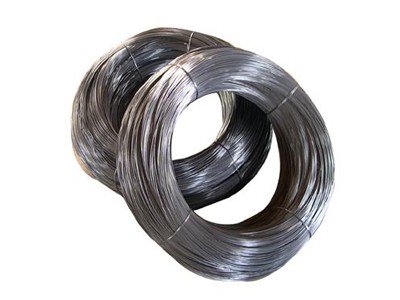
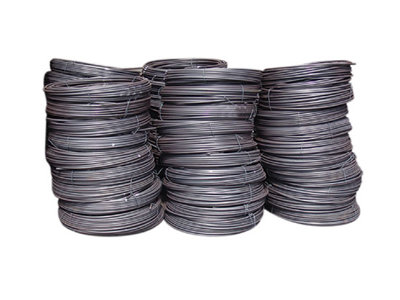
- Q:How about 3 mm diameter stainless steel wire welding?
- The DC TIG welding of stainless steel wire is of the best quality. Bending steel wire for general homemade profiling or profiling positioner (usually manually), or a can rely on.
- Q:What are the different wire drawing processes used for stainless steel wire production?
- Stainless steel wire production utilizes various wire drawing processes, each possessing its own advantages and applications. These processes are vital in achieving the desired wire diameter, surface finish, and mechanical properties. The following are some commonly employed wire drawing processes for stainless steel wire production: 1. Annealing: By heating the stainless steel wire to a specific temperature and gradually cooling it, this process enhances the wire's ductility and formability. Consequently, it becomes easier to draw the wire into the desired diameter. 2. Cold drawing: This process entails pulling the stainless steel wire through a sequence of dies to reduce its diameter. Cold drawing is typically conducted at room temperature, and multiple passes through different dies might be necessary to achieve the desired diameter. Cold drawing improves the wire's tensile strength and surface finish. 3. Wet drawing: Similar to cold drawing, wet drawing involves lubrication with oil or water during the drawing process. The lubricant minimizes friction between the wire and the dies, resulting in an improved surface finish and reduced risk of surface defects. 4. Dry drawing: Dry drawing is a variation of cold drawing where no lubrication is employed. This process suits stainless steel wires that do not require a high surface finish. Dry drawing is often utilized for wires with larger diameters. 5. Electrochemical wire drawing: Combining mechanical drawing with electrochemical machining, this process submerges the stainless steel wire in an electrolyte solution and applies an electric current while pulling it through the dies. Electrochemical wire drawing allows precise control over the wire's diameter and surface finish. Each of these wire drawing processes plays a significant role in producing stainless steel wire with specific properties and applications. The selection of the process relies on factors such as wire diameter, required surface finish, mechanical properties, and production volume.
- Q:Can stainless steel wire be used for wire rope terminations?
- Wire rope terminations can utilize stainless steel wire due to its high strength, durability, and resistance to corrosion. This makes stainless steel wire a suitable option for a range of applications, including those involving wire rope terminations. Industries such as marine, construction, and aviation frequently employ stainless steel wire rope terminations, as they are required to endure heavy loads and harsh environmental conditions. Depending on the specific needs of the application, stainless steel wire rope terminations can be produced in various forms, such as swaged fittings, mechanical fittings, or spliced terminations. Ultimately, stainless steel wire offers a dependable and enduring solution for wire rope terminations.
- Q:What are the different manufacturing standards for stainless steel wire?
- There are several different manufacturing standards for stainless steel wire, which are established to ensure quality and consistency in the production process. Some of the most common standards include: 1. ASTM (American Society for Testing and Materials) standards: ASTM A580 and ASTM A313 are two widely used standards for stainless steel wire. ASTM A580 specifies the requirements for stainless steel wire, including chemical composition, mechanical properties, and dimensional tolerances. ASTM A313 specifically addresses stainless steel spring wire. 2. ISO (International Organization for Standardization) standards: ISO 9001 is a quality management system standard that applies to the manufacturing of stainless steel wire. ISO 9001 ensures that manufacturers follow a set of procedures to consistently deliver products that meet customer requirements. 3. EN (European Norm) standards: EN 10270-3 is a European standard that provides specifications for stainless steel wire for springs. It defines the requirements for chemical composition, mechanical properties, and surface quality. 4. JIS (Japanese Industrial Standards) standards: JIS G4314 is a Japanese standard that specifies stainless steel wire for springs. It covers the chemical composition, mechanical properties, and surface quality requirements. These standards help manufacturers in maintaining product consistency, ensuring the quality of stainless steel wire, and facilitating international trade by providing a common set of specifications. Compliance with these standards is essential to ensure that stainless steel wire meets the required performance criteria and can be used in a wide range of applications.
- Q:Can stainless steel wire be used for wire mesh screens?
- Indeed, wire mesh screens can readily utilize stainless steel wire. Renowned for its resistance to corrosion, durability, and strength, stainless steel wire emerges as the optimal material for wire mesh screens. These screens find widespread employment in diverse fields like filtration, separation, protection, and reinforcement. With the capacity to endure severe environmental conditions, such as high temperatures and chemical exposure, stainless steel wire mesh screens remain immune to rusting or degradation. Furthermore, these screens offer exceptional visibility, airflow, and light transmission, rendering them suitable for implementation across industries ranging from aerospace and automotive to construction, food processing, and mining.
- Q:What are the different wire tensile strength options available for stainless steel wire?
- Stainless steel wire has gained a reputation for its robustness and endurance, making it a favored option for a variety of uses. Wire tensile strength in stainless steel comes in a range of choices to accommodate different needs. The measurement of tensile strength in stainless steel wire is typically conducted in pounds per square inch (psi) or megapascals (MPa). The available options for wire tensile strength can vary depending on the specific grade and alloy of stainless steel utilized. Several common choices for tensile strength in stainless steel wire are as follows: 1. Low Tensile Strength: Stainless steel wires with low tensile strength are generally employed in situations where strength is not a critical factor. These wires usually possess tensile strengths ranging from 50,000 to 75,000 psi or 345 to 515 MPa. They are often utilized in less demanding scenarios such as craft projects, decorative purposes, or light-duty fencing. 2. Medium Tensile Strength: Stainless steel wires with medium tensile strength are commonly used across a wide array of applications. These wires typically exhibit tensile strengths ranging from 75,000 to 150,000 psi or 515 to 1,035 MPa. They are suitable for tasks involving wire mesh, cable ropes, springs, and general-purpose wire products. 3. High Tensile Strength: Stainless steel wires with high tensile strength are specially designed for applications necessitating exceptional strength and durability. These wires usually possess tensile strengths surpassing 150,000 psi or 1,035 MPa. They are often employed in demanding scenarios like aerospace, automotive, marine, and industrial settings where high-stress conditions prevail. It is of utmost importance to select the appropriate tensile strength option according to the specific requirements of your application. Factors such as load-bearing capacity, corrosion resistance, and environmental conditions should be taken into consideration when choosing the suitable tensile strength for your stainless steel wire. Seeking guidance from a knowledgeable supplier or engineer can help ensure the selection of the most suitable stainless steel wire for your needs.
- Q:What are the different types of stainless steel wire mesh filters?
- There are several different types of stainless steel wire mesh filters available, each with its own unique characteristics and applications. Some of the common types include: 1. Plain Weave: This is the most basic and commonly used type of stainless steel wire mesh filter. It consists of wires woven over and under each other in a simple crisscross pattern, creating square openings. Plain weave filters are suitable for general filtration applications and offer good strength and durability. 2. Twill Weave: Twill weave filters have a diagonal pattern formed by wires passing over two and under two, creating a tighter weave compared to plain weave. This type of filter provides increased filtration efficiency and is often used in applications where finer particles need to be captured. 3. Dutch Weave: Dutch weave filters have a complex weave pattern that consists of coarse wires running in one direction and finer wires running in the other, creating a dense filtration surface. This type of filter is particularly effective in capturing fine particles while maintaining good flow rates. It is commonly used in applications that require high precision filtration, such as oil and gas, pharmaceutical, and food processing industries. 4. Welded Wire Mesh: Unlike woven filters, welded wire mesh filters are made by welding individual wires together at the intersections. This type of filter offers excellent strength and rigidity, making it suitable for demanding applications that require heavy-duty filtration, such as mining and construction industries. 5. Expanded Metal Mesh: Expanded metal mesh filters are made by cutting and stretching a sheet of metal, creating a pattern of diamond-shaped openings. This type of filter provides high open area and good airflow, making it suitable for applications where ventilation and drainage are important, such as air filters and drainage systems. It is important to select the appropriate type of stainless steel wire mesh filter based on the specific requirements of the filtration application, including the desired filtration efficiency, flow rate, and durability. Consulting with a filtration expert or supplier can help in selecting the right type of filter for a particular application.
- Q:What is the minimum diameter of stainless steel wire? Do you have a price smaller than 10 microns? Where can I sell it?
- I'm sorry, at present, industrial grade stainless steel wire can only reach 0.05mm, that is, 50 microns.
- Q:Can stainless steel wire be used for pet enclosures?
- Yes, stainless steel wire can be used for pet enclosures. It is a durable and corrosion-resistant material that can provide a secure and safe environment for pets.
- Q:What are the common applications of stainless steel wire?
- Stainless steel wire has a wide range of applications due to its unique properties and characteristics. Some of the common applications of stainless steel wire include: 1. Aerospace and aviation industry: Stainless steel wire is used in aircraft components, such as control cables, springs, and fasteners, due to its high strength and corrosion resistance. 2. Automotive industry: Stainless steel wire is utilized in various automotive parts, including springs, exhaust systems, and brake cables, as it can withstand high temperatures and provide durability. 3. Construction industry: Stainless steel wire is used for reinforcing concrete structures, fencing, wire mesh, and cables in construction projects due to its strength, corrosion resistance, and aesthetic appeal. 4. Medical and healthcare industry: Stainless steel wire is employed in medical devices and equipment, such as surgical instruments, orthopedic implants, and dental braces, as it is biocompatible, resistant to body fluids, and easy to sterilize. 5. Food processing industry: Stainless steel wire is used in food processing equipment, such as sieves, filters, conveyor belts, and oven racks, as it is resistant to corrosion, easy to clean, and does not react with food substances. 6. Industrial manufacturing: Stainless steel wire finds applications in various industrial processes, including wire forming, welding, springs, and mesh screens, due to its high strength, ductility, and resistance to chemicals and heat. 7. Marine and offshore industry: Stainless steel wire is utilized in marine applications, such as rigging, mooring lines, and fishing nets, as it is resistant to saltwater corrosion and can withstand harsh environmental conditions. 8. Electronics and electrical industry: Stainless steel wire is used in the production of electrical cables, heating elements, and electronic components due to its conductivity, resistance to heat, and corrosion resistance. 9. Art and craftsmanship: Stainless steel wire is employed by artists and craftsmen for various artistic purposes, such as sculpture, jewelry making, and wire art, due to its malleability, durability, and aesthetic appeal. Overall, stainless steel wire finds extensive applications across various industries due to its unique combination of strength, corrosion resistance, thermal stability, and versatility.
1. Manufacturer Overview |
|
|---|---|
| Location | Hebei,China |
| Year Established | 2009 |
| Annual Output Value | Above US$1 million |
| Main Markets | Asia, Middle East,America |
| Company Certifications | CE, CCC, ISO90001 |
2. Manufacturer Certificates |
|
|---|---|
| a) Certification Name | |
| Range | |
| Reference | |
| Validity Period | |
3. Manufacturer Capability |
|
|---|---|
| a)Trade Capacity | |
| Nearest Port | Tianjin |
| Export Percentage | 0.3 |
| No.of Employees in Trade Department | 4 People |
| Language Spoken: | English;Chinese |
| b)Factory Information | |
| Factory Size: | Above 5,000 square meters |
| No. of Production Lines | 3 |
| Contract Manufacturing | OEM Service Offered;Design Service Offered |
| Product Price Range | Lower |
Send your message to us
AISI304 Stainless Steel Wire Mesh Roll
- Loading Port:
- China Main Port
- Payment Terms:
- TT or LC
- Min Order Qty:
- 1 Ton m.t.
- Supply Capability:
- 2000 Tons Per Month m.t./month
Offcanvas right
OKorder Service Pledge
OKorder Financial Service
Similar products
New products
Hot products
Hot Searches
Related keywords

